Abstract
RS-533 is a novel carbapenem antibiotic. Its activity was compared with that of imipenem and the new cephalosporins, aztreonam, piperacillin, and tobramycin. RS-533 had activity comparable to that of imipenem, inhibiting the majority of the Enterobacteriaceae, streptococci, staphylococci, and Bacteroides species at concentrations of less than or equal to 2 micrograms/ml. RS-533 inhibited Enterobacter cloacae, Citrobacter freundii, and Serratia marcescens resistant to ceftazidime, aztreonam, and cefoperazone, but RS-533 did not inhibit all methicillin-resistant Staphylococcus aureus or Pseudomonas maltophilia. It inhibited tobramycin-resistant members of the Enterobacteriaceae and Pseudomonas aeruginosa. RS-533 was stable against attack by common chromosomal and plasmid-mediated beta-lactamases and was an effective inhibitor of many beta-lactamases.
Full text
PDF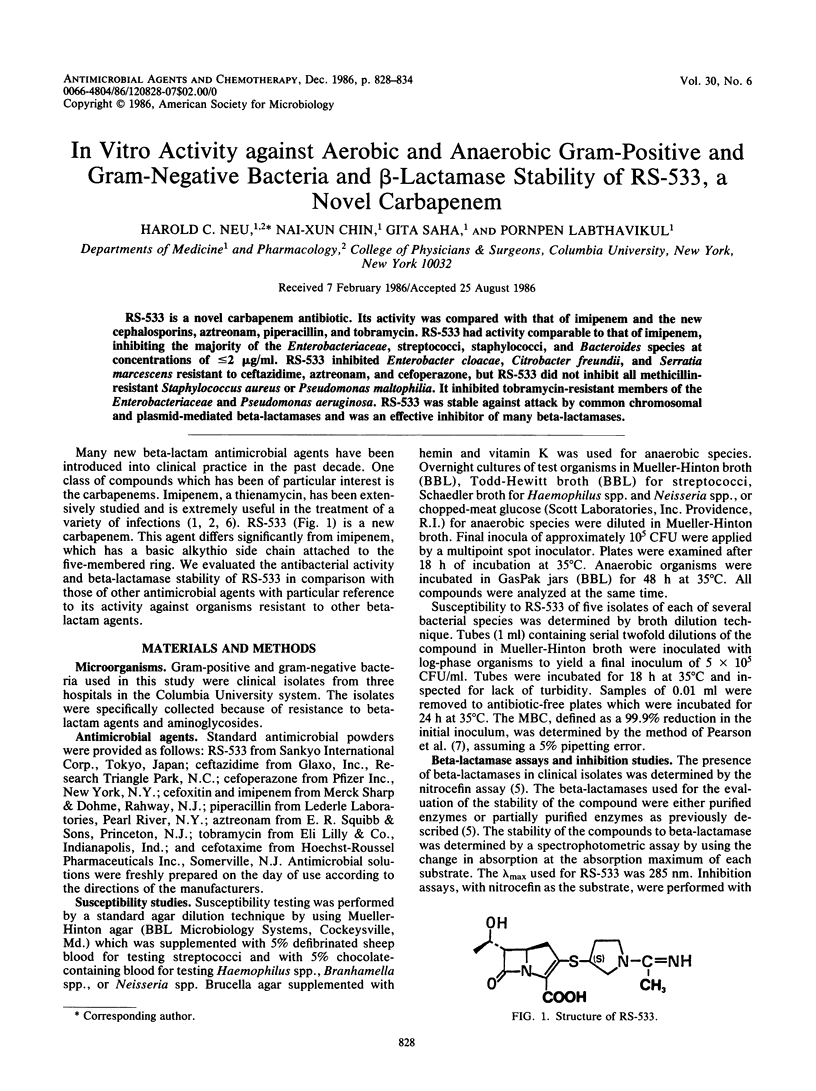
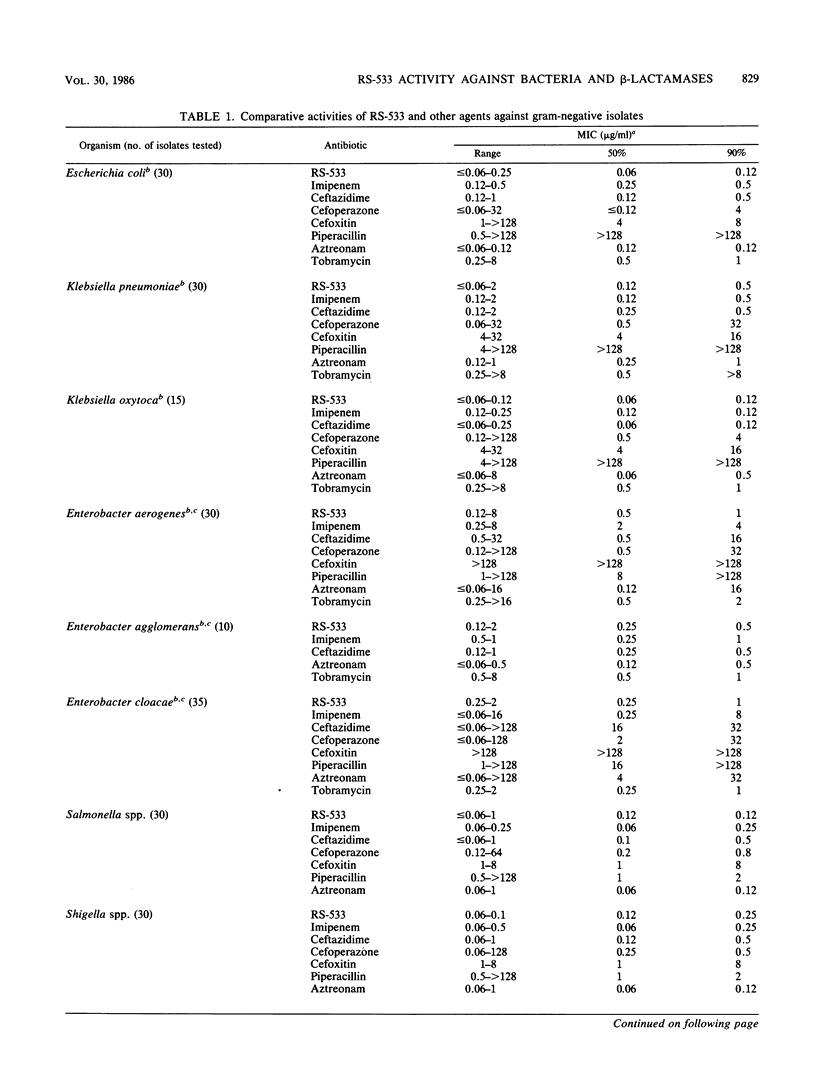
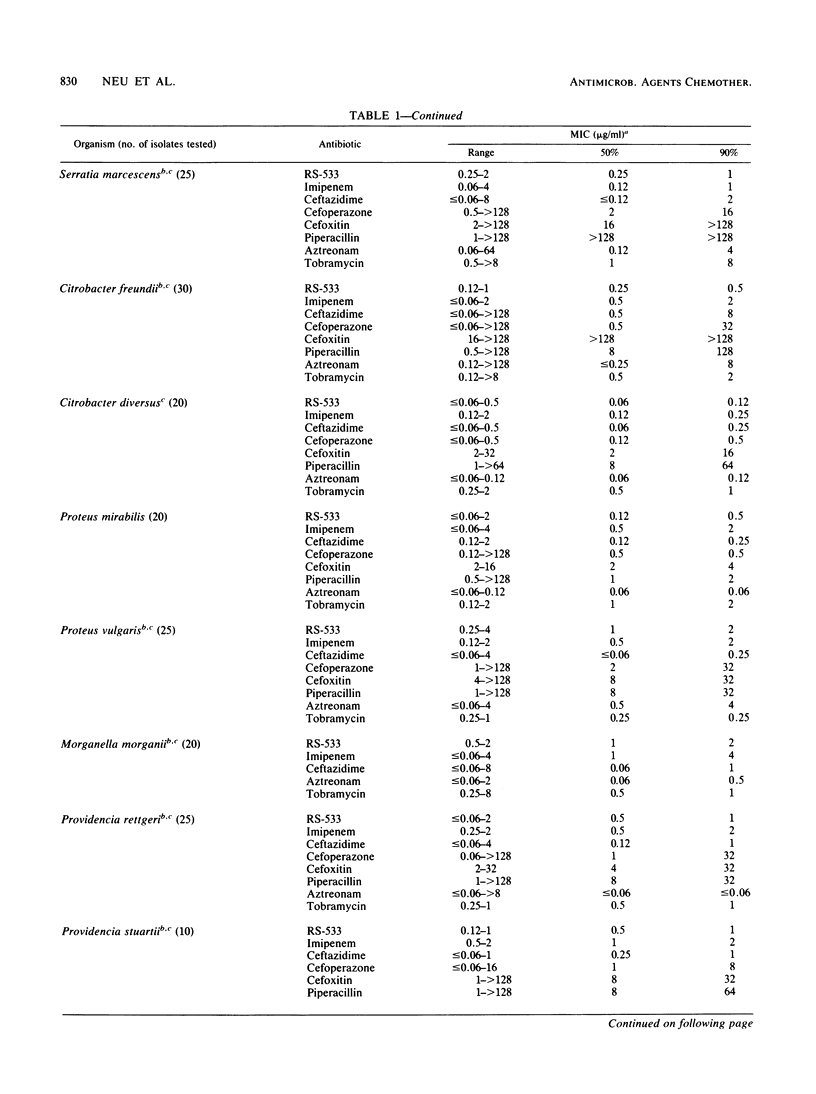
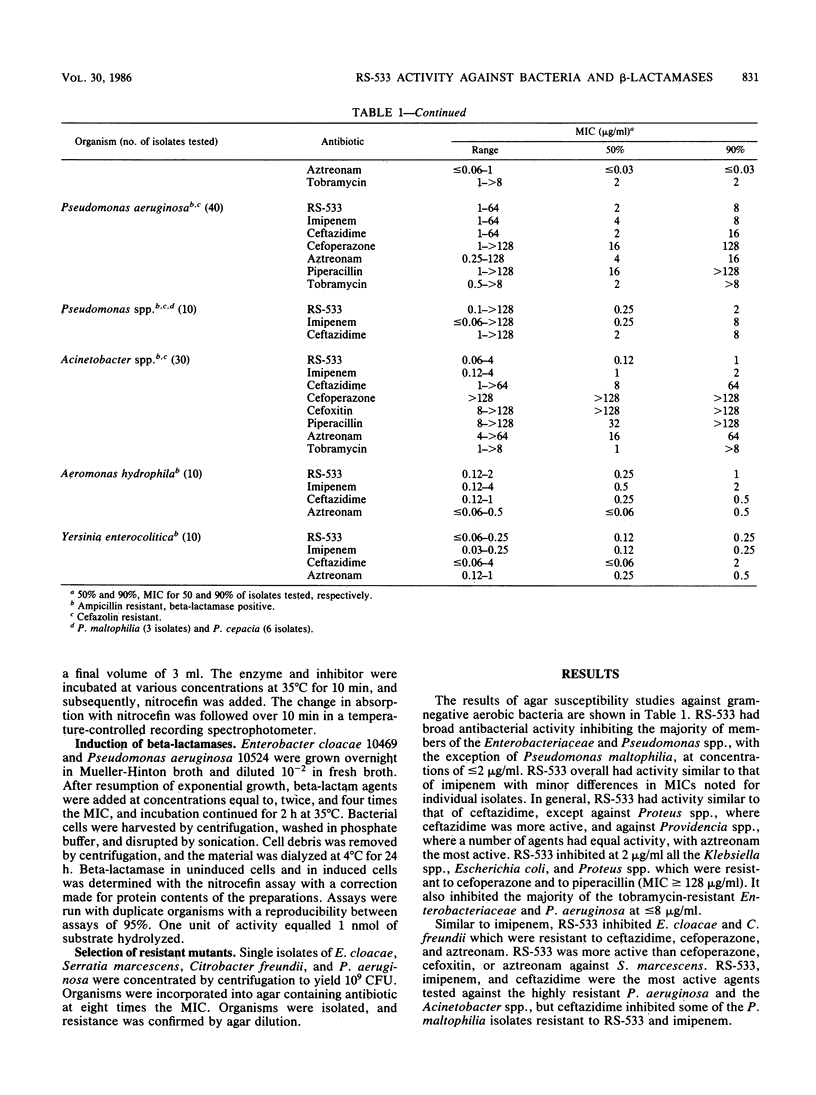
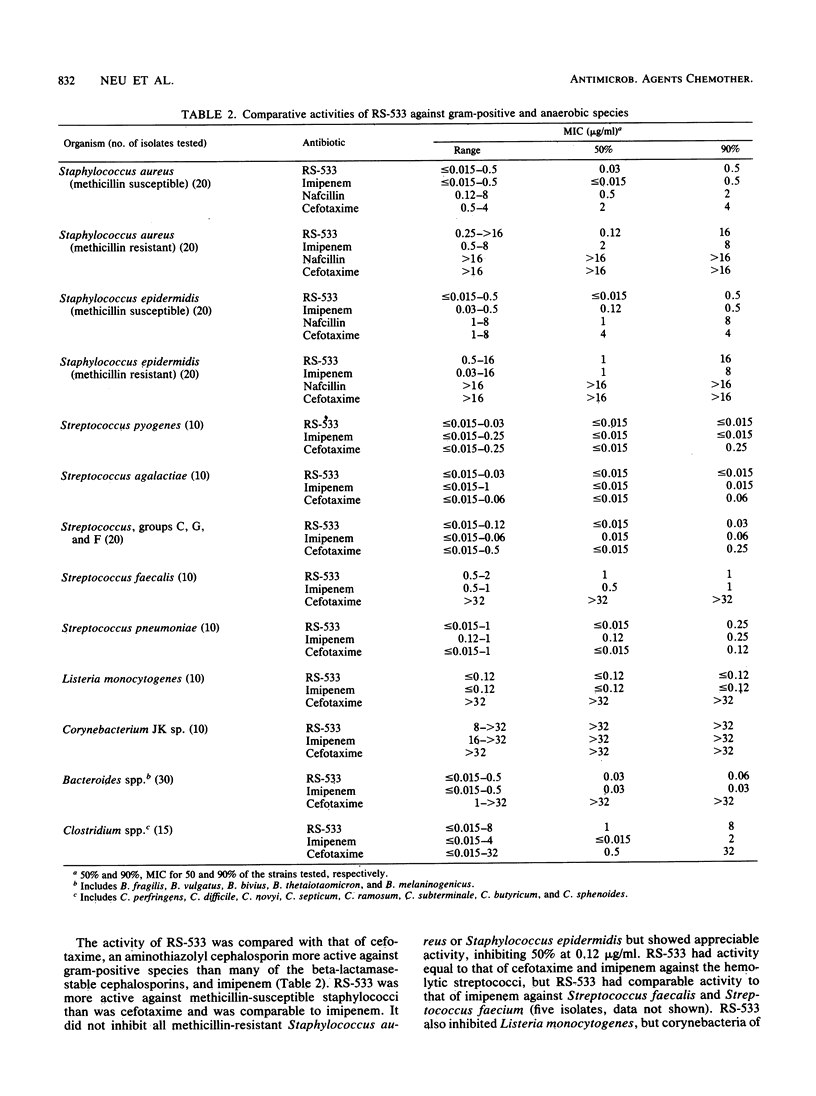
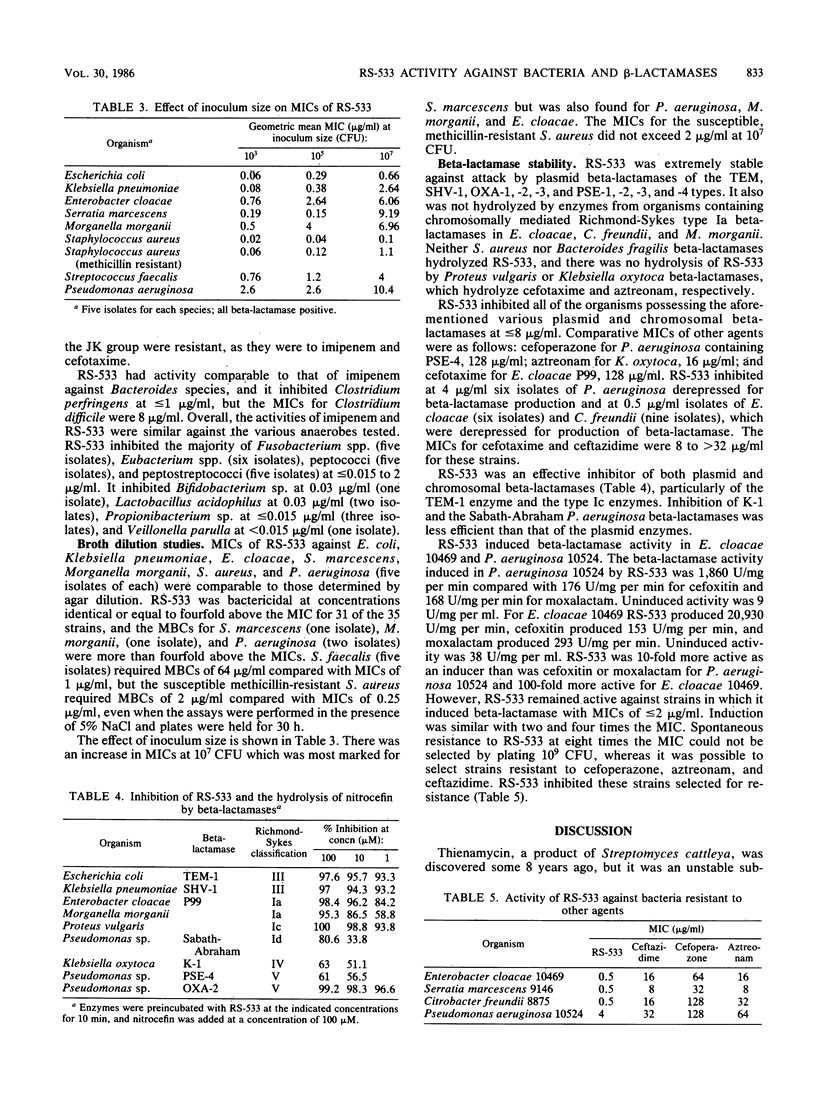
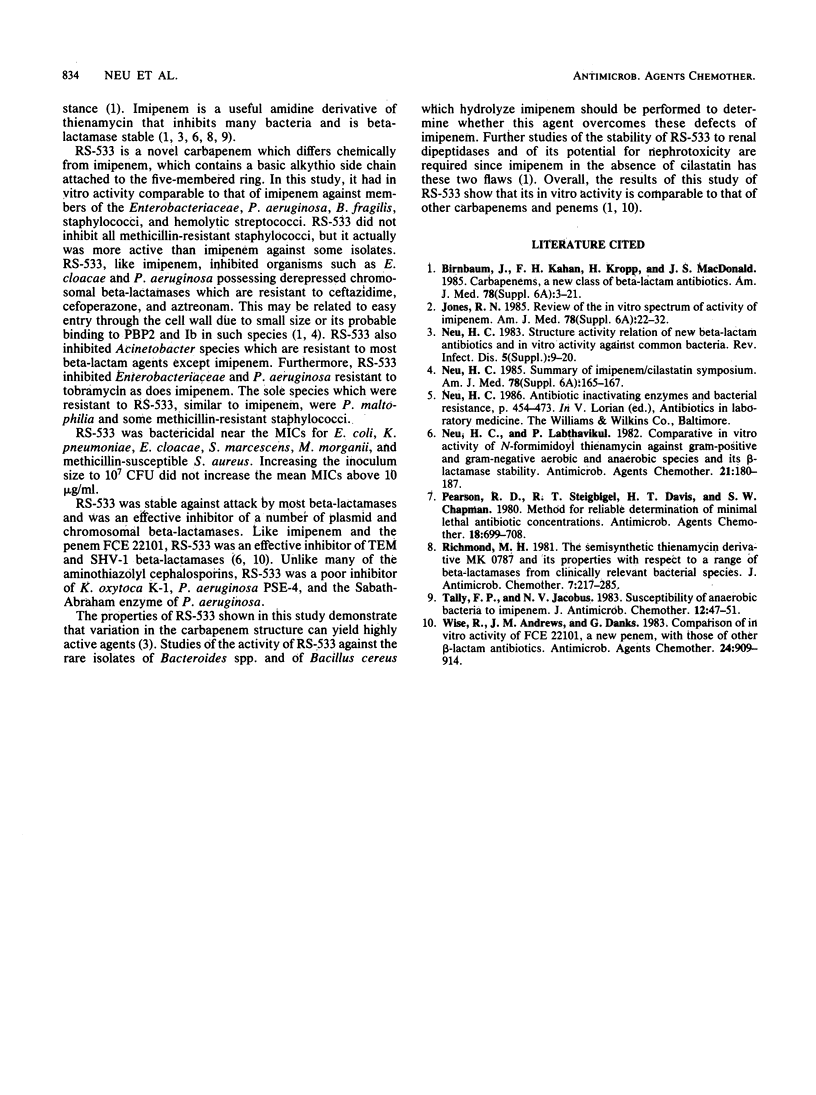
Selected References
These references are in PubMed. This may not be the complete list of references from this article.
- Birnbaum J., Kahan F. M., Kropp H., MacDonald J. S. Carbapenems, a new class of beta-lactam antibiotics. Discovery and development of imipenem/cilastatin. Am J Med. 1985 Jun 7;78(6A):3–21. doi: 10.1016/0002-9343(85)90097-x. [DOI] [PubMed] [Google Scholar]
- Jones R. N. Review of the in vitro spectrum of activity of imipenem. Am J Med. 1985 Jun 7;78(6A):22–32. doi: 10.1016/0002-9343(85)90098-1. [DOI] [PubMed] [Google Scholar]
- Neu H. C., Labthavikul P. Comparative in vitro activity of N-formimidoyl thienamycin against gram-positive and gram-negative aerobic and anaerobic species and its beta-lactamase stability. Antimicrob Agents Chemother. 1982 Jan;21(1):180–187. doi: 10.1128/aac.21.1.180. [DOI] [PMC free article] [PubMed] [Google Scholar]
- Pearson R. D., Steigbigel R. T., Davis H. T., Chapman S. W. Method of reliable determination of minimal lethal antibiotic concentrations. Antimicrob Agents Chemother. 1980 Nov;18(5):699–708. doi: 10.1128/aac.18.5.699. [DOI] [PMC free article] [PubMed] [Google Scholar]
- RIchmond M. H. The semi-synthetic thienamycin derivative MK0787 and its properties with respect to a range of beta-lactamases from clinically relevant bacterial species. J Antimicrob Chemother. 1981 Mar;7(3):279–285. doi: 10.1093/jac/7.3.279. [DOI] [PubMed] [Google Scholar]
- Sinkovics J. G., Dreesman G. R. Monoclonal antibodies of hybridomas. Rev Infect Dis. 1983 Jan-Feb;5(1):9–34. doi: 10.1093/clinids/5.1.9. [DOI] [PubMed] [Google Scholar]
- Tally F. P., Jacobus N. V. Susceptibility of anaerobic bacteria to imipenem. J Antimicrob Chemother. 1983 Dec;12 (Suppl 500):47–51. doi: 10.1093/jac/12.suppl_d.47. [DOI] [PubMed] [Google Scholar]
- Wise R., Andrews J. M., Danks G. Comparison of in vitro activity of FCE 22101, a new penem, with those of other beta-lactam antibiotics. Antimicrob Agents Chemother. 1983 Dec;24(6):909–914. doi: 10.1128/aac.24.6.909. [DOI] [PMC free article] [PubMed] [Google Scholar]


